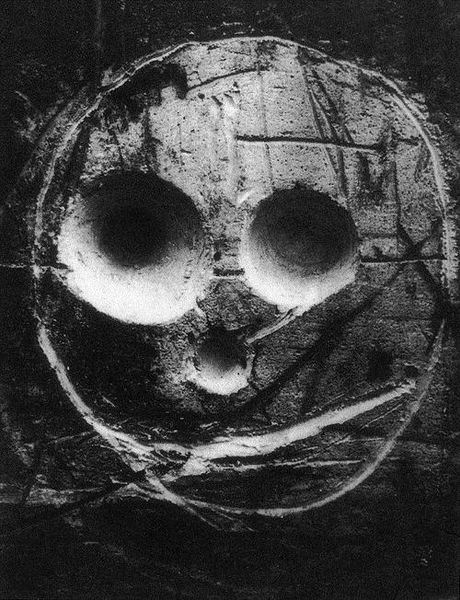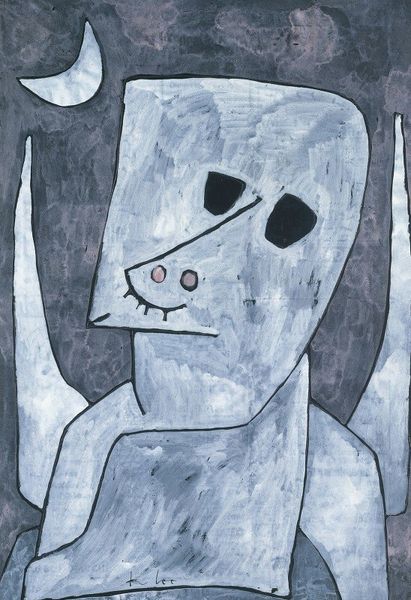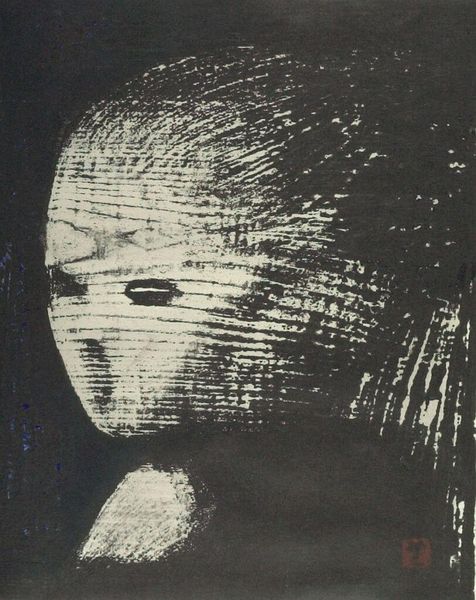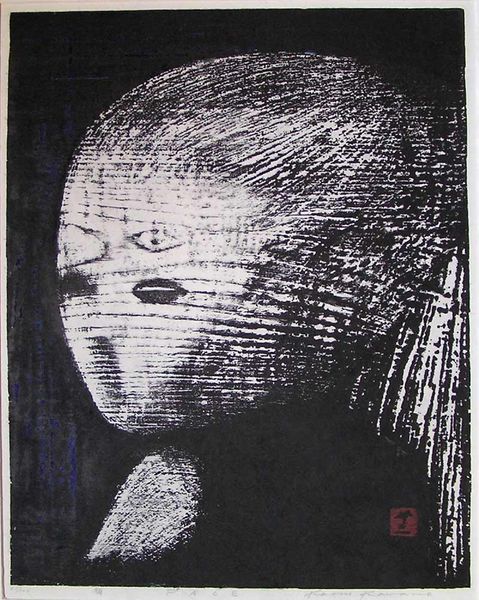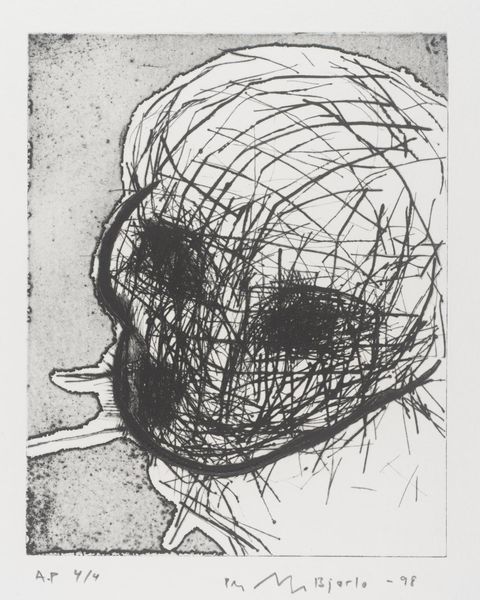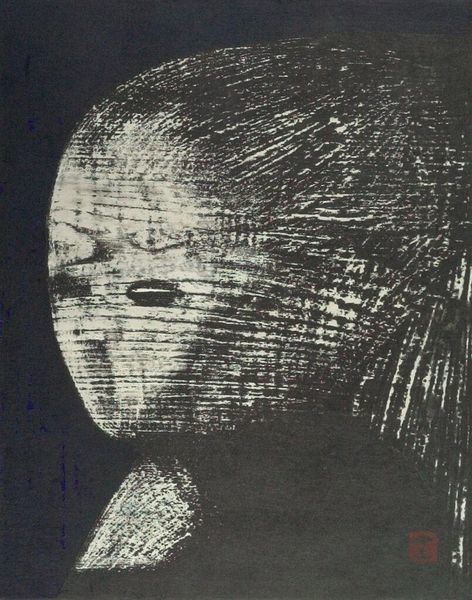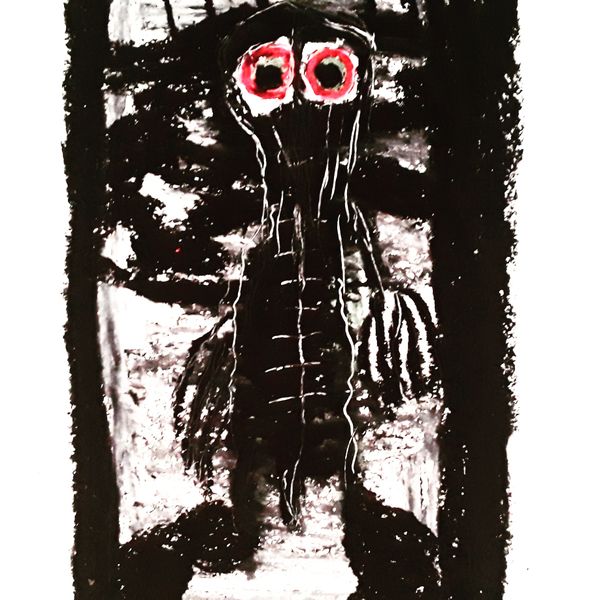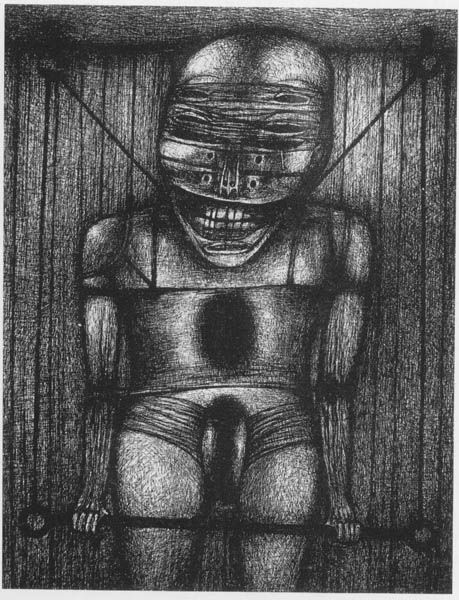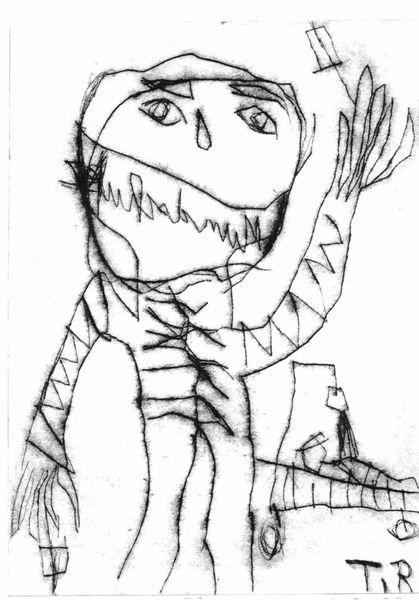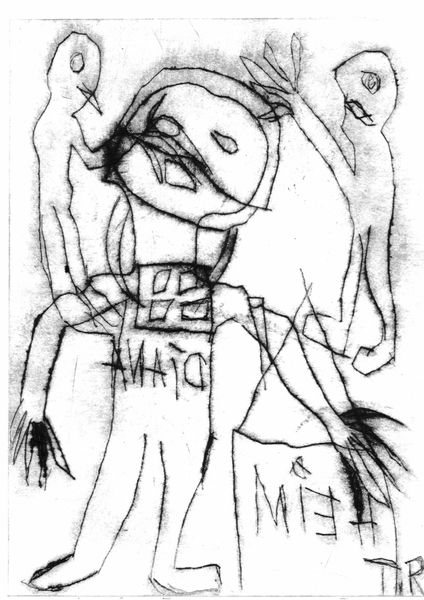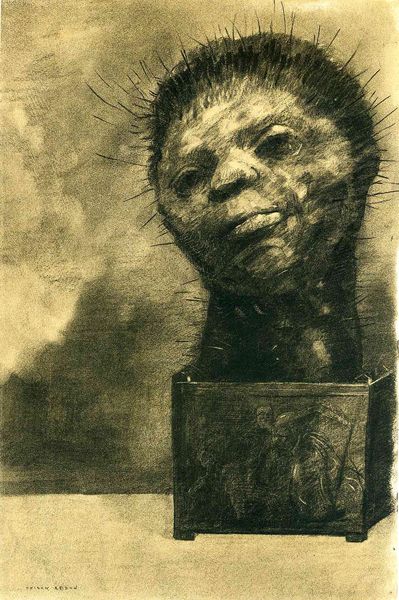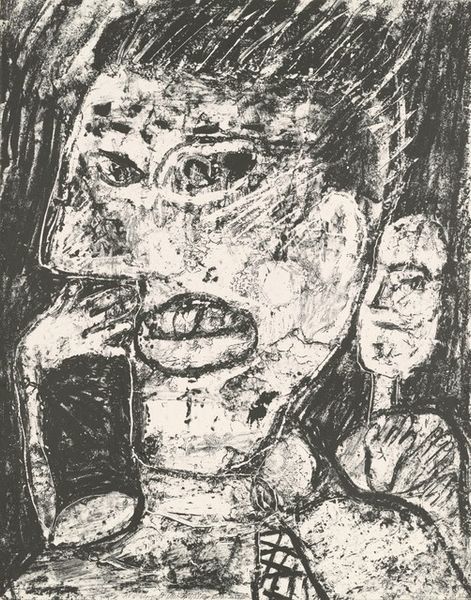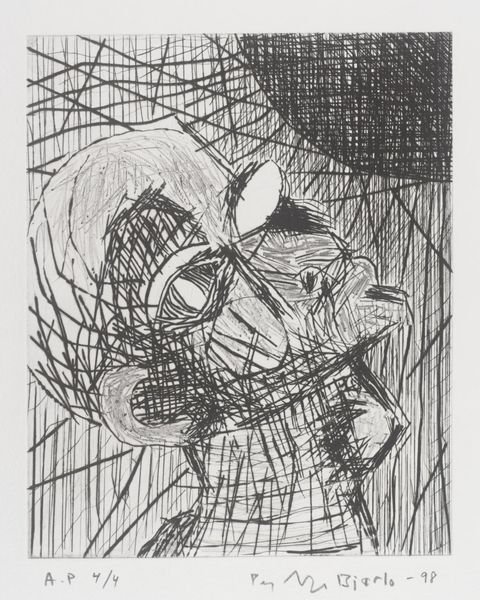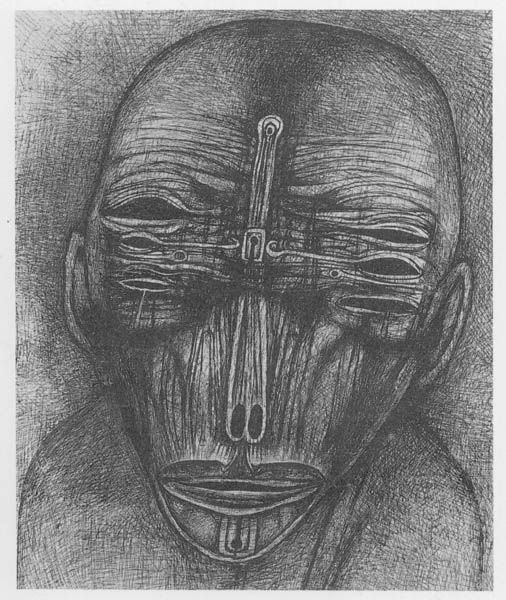
Copyright: Public domain
Editor: This is "Monster's Head," a charcoal drawing by Lajos Vajda from 1938. It’s…intense. The stark contrast and almost skeletal form give it a very unsettling mood. What do you see in this piece? Curator: I see a layering of symbols deeply embedded in the collective psyche. This "monster," constructed from sharp lines and vacant eyes, evokes primal fears. The skeletal depiction references death and decay but also hints at a process of stripping away layers to reveal something essential beneath. It’s the archetype of the shadow self, the repressed aspects of our being. Does the fragmentation suggest anything to you? Editor: It does make me think about fractured identities, especially in times of turmoil. Curator: Exactly! And consider the historical context: 1938, on the brink of war. Is it possible that this monster embodies the anxieties and collective dread of a society facing unimaginable horrors? Notice the lines used to compose this drawing. What memories do they echo in a war setting? Editor: Yes, they almost look like prison bars, or the fortifications one might see during a war. The lack of distinct features contributes to that sense of faceless dread. Curator: Precisely. The monster isn’t individualized, which enables it to act as a blank slate for societal fears. It mirrors back the viewer's own anxieties and unacknowledged emotions, thereby transcending simple portraiture. It’s a dark mirror reflecting what we’d rather not confront. What would you say is your most potent visual take-away? Editor: I think it is a great representation of fear taking physical form; something internal made external and visible. Thank you! Curator: It certainly speaks to the enduring power of visual symbols to hold and transmit complex emotions and cultural anxieties through time.
Comments
No comments
Be the first to comment and join the conversation on the ultimate creative platform.
